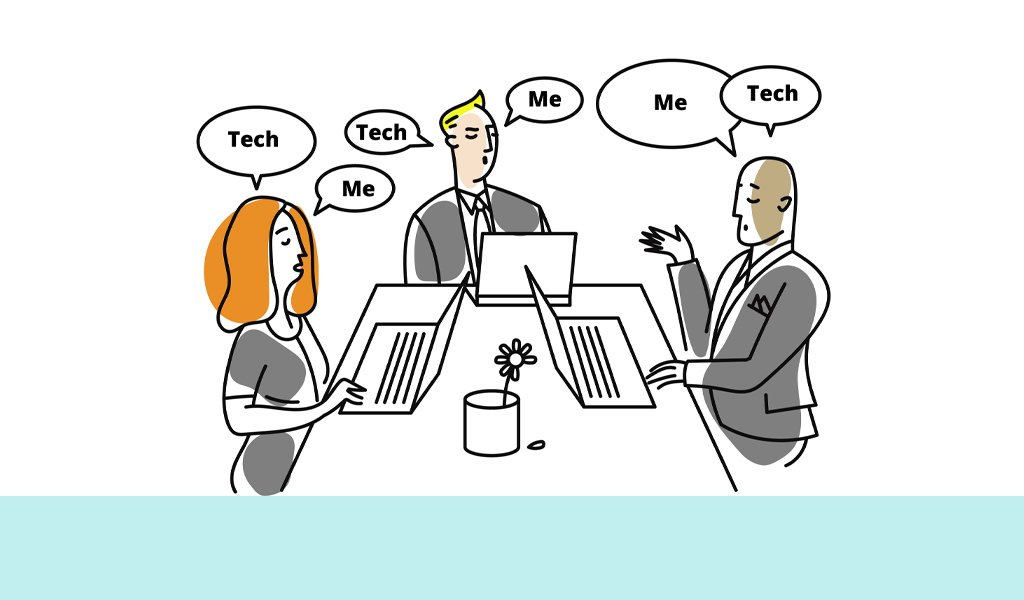
Product centricity has changed the way businesses organize to deliver high-performing products & services. The product function has evolved considerably as has the approach to product development and product leadership. Increasingly we see the lines between specialisms blurred as product manager do design, designers do research and research manage products.
What is causing this evolution and should we be worried about it?
The Product function is changing
Back in June 2023, it was reported via Twitter (now X) that Brian Chesky, CEO of Airbnb, told an audience that Airbnb had “got rid” of the Product Management function. In fact, they had merged the Product Management and Product Marketing functions so the news wasn’t quite as dramatic as some people liked to make out. But it does reflect an ongoing evolution in the product function.
I have had a number of conversations with product leaders recently, and I have asked all about the changing role of the product function in organizations. What is clear is that there is no one way of organizing the team, more a fragmentation around a theme. People with different job titles (product owner, product manager, product strategist etc.) have overlapping accountabilities, they can even be doing identical jobs in different organizations. What seems to matter is an individual’s career history, capabilities, a willingness to take responsibility and pragmatism by the organization.
It is easy to forget, we have only been building digital products for 20 years and they have only been referred to as such for less than a decade. We are still learning, trying to work out the best way to manage and evolve existing products and bring new ones to market. We have borrowed existing models and job roles from parallel industries and have adapted them for our use in digital. But that is a work in progress.
Jobs to be done
Apparently, when Brian Chesky made his announcement, a big cheer went up from the largely designer-populated audience. It’s not exactly turkey’s cheering on the arrival of Christmas, but it does seem to me that they missed the point. Whilst the tension between the two roles is often talked about, fundamentally, they both want the same thing – a successful product. And the role each plays in achieving that should be complementary.
Would a similar announcement about a cull in designers raise the same response from a group of researchers? If they did, I would hope it was because they see the bigger picture. With the growth in democratization, and the introduction of the term “people who do research” to the product team lexicon, the old designer/researcher rivalries are largely irrelevant.
What is falling out of this shake up is that there are key jobs that need to be done in order to innovate, design and deliver products and services and who does what is more fluid than ever. In some organizations that means the capable or available person with capacity and/or enthusiasm taking responsibility. Hence, we hear of product owners who describe themselves as mini-CEO’s, the democratization of research, and researchers “doing” design.

Is this the end of the specialist?
There are a lot of specialist skills that make up the product team, which typically includes some or all of the following roles, either dedicated or shared from a central resource:
- Product manager
- Product marketing manager
- Product owner
- Developer / Engineer
- UI Designer
- Researcher
- Business analyst
- Research Operations Manager
- Design Operations Manager
If you see your own job on the list, you may feel that the answer to my question is ‘no’, this is not the end of the specialist. But a combination of necessity, technology and maturity suggest to me that nothing is off limits. The research specialism has already been diluted by the arrival of research platforms and the democratization of, in particular, evaluative research. Designers and Product people are doing research, with or without the necessary skills or expertise.
Technology has changed design and will continue to do so. When was the last time your information architect created a wireframe? Figma is now the go-to platform for prototyping and the game has changed entirely. With the arrival of generative AI, design and coding may be delivered by people with far fewer skills than your designers currently need.
So, is there a landgrab going on, with every role trying to inflate its importance and broaden its capabilities? I don’t think that is the case and to illustrate that, here are examples, that are reasonably representative based on an online search – “What does a [insert job role] do?”:
Designer: They think in terms of both the big picture and tiny details. Product designers are masters of storytelling, idea generation, sketching, prototyping, user research, usability testing and code.
Product Manager: The product manager role is responsible for the prioritization of a product’s release course and product life cycle, as well as for coordinating all the processes needed to get a product not only ready for the market but onto the market as well. This includes Determining the stakeholders involved, both internal and external; Determining metrics for success; Collecting and interpreting customer feedback; Determining product features.
Product Owner: The key responsibilities of a product owner are: Turning the product strategy into user stories and tasks for development; Managing, grooming and prioritizing the product and development backlogs; Managing the relationship between product and development teams; Being the voice of the customer – ensuring that they are represented during development; Being available to answer questions from the development team, Being able to articulate the product vision; Attend daily standups, planning sessions, reviews, and retrospectives; Keep on top of releases.
Web Developer: A web developer can be defined as someone who is specialized in the development of web applications and services (such as websites, apps, etc.) that run in a web browser. Web development involves learning several programming languages, frameworks, and databases, as different web applications use different technologies and have other functionalities.
UX Researcher: The role of a UX Researcher involves several key responsibilities, including conducting user research, analyzing data, and communicating insights to cross-functional teams. A UX Researcher is responsible for conducting user research through various qualitative and quantitative methods, such as surveys, interviews, and usability testing. They analyze the data collected from these methods to gain insights into user behavior, preferences, and pain points. These insights are used to inform the design and development of products and services.
I think these are all a pretty accurate and fair reflection of the specialist skills each of these roles has. Perhaps the designer capability has expanded a little and there are overlaps between Product Manager and Product Owner, but overall, I don’t think this reflects a land grab. I think the specialisms are understood and acknowledged.
What’s coming next?
Organizational change tends to be driven by seismic events. The onrush of generative AI, and a struggling global economy resulting from a war in Europe, and a “once in a lifetime” pandemic that changed working practices for ever, are definitely the ingredients needed to drive operational innovation.
All that pressure is forcing organizations to get leaner. For those with a strong digital focus, I think the adoption of a product centric organization structure is a key reason why we are seeing a blurring of the lines between specialisms. I expect experimentation and evolution in job roles and accountabilities to continue, regardless of job titles, particularly during the next decade.
For example, Design Operations & Research Operations: Why not product operations? NNg already argues that Design Ops should support all UX professionals. Both functions are about supporting the development of products at scale, so do they need to be separate?
As the use of generative AI gains maturity in a few years’ time, it is very likely we will see researchers doing design, designers doing development and developers doing design.
Reasons to be optimistic
Despite all this change I am optimistic about our ability as digital professionals to adapt. As the industry has grown and matured, we have seen the emergence of the gig economy, people “going plural”, the removal of geographic barriers to how we work. The context we work in has facilitated our ability to adapt.
Looking to technology to augment our own capabilities comes naturally to digital professionals. We are quick to switch to better, more effective technologies. According to a UXTool survey, in 2017 Invision was used by 60% of respondents, 3-years later the share was 23% and Figma had more or less replaced it. The adoption of generative AI to augment our work has already started and shows no sign of slowing.
As long as we as individuals remain aware of the capabilities required to deliver high-performing products and services, are prepared to adapt, and keep our skills up to date we have no need to be worried.
UX24/7 helps organizations build their capability to bring their customers into the product development cycle. For more information or a free initial consultation email us at hello@ux247.com.


